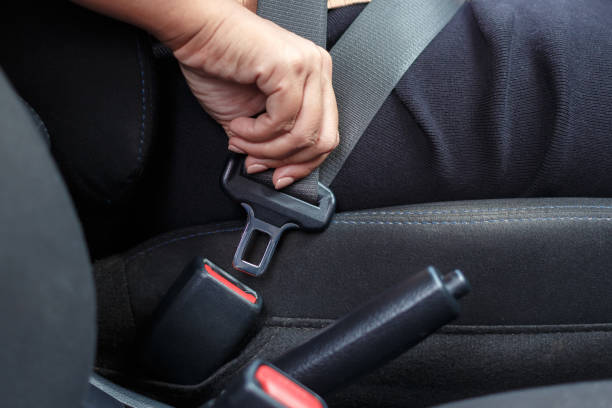How Technology is Reducing Accidents: The Tech Revolution

The modern era of technological enhancement has paved the way for significant changes to come into play in how we live, work and drive. The single largest appreciable difference technology has made in our lives is arguably within the automotive safety realm. Technology is key to reducing traffic accidents and making roads safer than ever – from advanced driver assistance systems (ADAS) development to autonomous vehicles. So, let us discuss some tech innovation, which is preventing from accidents and above all saving lives of the riders.
Advanced Driver Assistance Systems (ADAS)
ADAS (Advanced Driver Assistance Systems) are developed to automate and enhance vehicle safety as well as the driving experience. To do this, the systems rely on a host of sensors, cameras and other offending technology to predict potential danger spots in order help drivers go about avoiding collisions. Examples of technology to be tested include adaptive cruise control, lane departure warning systems, blind-spot detection and automatic emergency braking.
The adaptive cruise control controls the speed of the car and automatically adjusts it so that a safe distance with respect to other vehicles is maintained. Lane departure warning systems can reduce the number of collisions by alerting a driver when they are about to leave their lane. This means that you can clip a car in your blind spot, as these systems alert the driver to vehicles they might not have seen and alerts them ahead of time so side collisions become less likely. These system function in that they will sense an imminent collision and then apply the brakes to either prevent or lessen the impact of a crash. All of this combines to help the driver know that something is about to happen in time for him/her can do end effectively avoid a crash.
Autonomous Vehicles
The First Autonomous Vehicles: Self-Driving Cars These cameras and sensors are fed into an artificial intelligence that drives or significantly assists driving with minimal human input. Combining the technology, designed to operate without human intervention at all times, with radio spectrum would reduce driver errors that cause most crashes and hence cut road incidents significantly.
While companies like Tesla, Waymo and others are pushing the envelope in autonomous driving tech. Marcus Leng goes on to explain that the self-driving cars are programmed for everyday traffic rules, such as stop signs and right-of-way operations, have been trained on keeping safe distances between vehicles during times of high-flow or low flowage in a highly repetitive manner given uniformed driving strategies across many drivers over time. Although there may not be a plethora of fully autonomous vehicles out and in use, the advancement shows us what could potentially come from future self-driving capabilities that limit human error on roads.
Vehicle-to-Everything (V2X) Communication
V2X stands for Vehicle-to-Everything communication and is a technology that emerges among other things with the ability of vehicles to share data between them, including road signs or traffic lights. This will enable the agency to release information on road conditions, traffic flow and potential hazards in real time.
V2X communication can avoid by providing them crucial information which they might not have otherwise to prevent the accidents. This can allow, for example following cars to respond more quickly if a vehicle in front brakes suddenly. V2X enables traffic light to communicate with oncoming vehicles, maximizing the safe flow of traffic at intersections.
Artificial Intelligence and Machine Learning
We know that artificial intelligence (AI) and machine learning serve an important purpose in automotive safety. This allows vehicles to learn from huge amounts of data and make themselves smarter through use AI and ML the longer they’re used. AI can study driving habits, predict potential risks and take immediate decisions to improve safety.
We used machine learning algorithms for creating advanced driver assistance systems and self-driving vehicles. These algorithms ingest data from numerous sensors and cameras to identify objects, detect obstacles, devise driving strategies. Machine-learning methods enable these systems to get better and more reliable as they experience increasing use.
Greater Connectivity and Telematics
Advanced connectivity and infotainment systems are changing the face of operation in cars and how they communicate. Telematics systems leverage GPS and OBD (onboard diagnostic) technology to track vehicle performance, as well as driver habits. This helps in giving real-time feedback to drivers so they could improve their driving habits and the chances of any accident is minimized.
These include in-car connectivity, real-time traffic updates and navigation assistance as well as weather alerts which help improve driving safety. Real time road condition updates warn drivers to dangers so that they can be prepared and avoid accidents. Also, in the unfortunate case of an accident occurring vehicles can sort use their connection to automatically call for emergency services also saving lives and shortening response times.
Collision Avoidance Systems
A collision avoidance system is a type of device used to prevent or reduce the severity of an accident.(outputs warning/ stopping mechanism after detecting an obstacle). A variety of systems use radar, lidar and cameras to oversee the car’s surroundings for potential danger.
If a crash seems about to happen the system can alert the driver and if needed take action automatically, such as steering or braking to prevent an accident. Many of these systems are specifically designed to reduce rear-end collisions, which account for a large percentage of accidents. Such systems add one more layer of safety and save many accidents from happening on road.
Smart Road Infrastructure
Road infrastructure, which ensures road safety in a novel way with the advance of technology is smart road-infrastructure. Such as smart traffic signals, connected car signs and communication systems that will be able to get in touch with vehicles offering real-time assistance etc.
That means smart traffic lights that can adapt their timing based on how much congestion is present or a more predictable way to update light signals as you pass through an intersection. Dynamic signing on the road that changes information such as speed limit, and weather or traffic conditions based upon certain triggers. Traffic pattern monitoring and the real-time guidance of safe routes is a potential upside to intelligent transportation systems that automotive artificial intelligence has yet to leverage.
As a Final Consideration
The driving category is also benefiting from technology, With great innovations making roads safer and Driving so much better. These innovations, ranging from advanced driver assistance systems and autonomous vehicles to vehicle-to-everything (V2X) communication technology as well as intelligence road infrastructure are providing a key function in helping lower traffic accidents and save live. With these advancements evolving and expanding, we are poised to see even safer roads down the line. These improvements should have us all excited about the prospect of a future where driving is safer and more convenient for everyone.













Post Comment